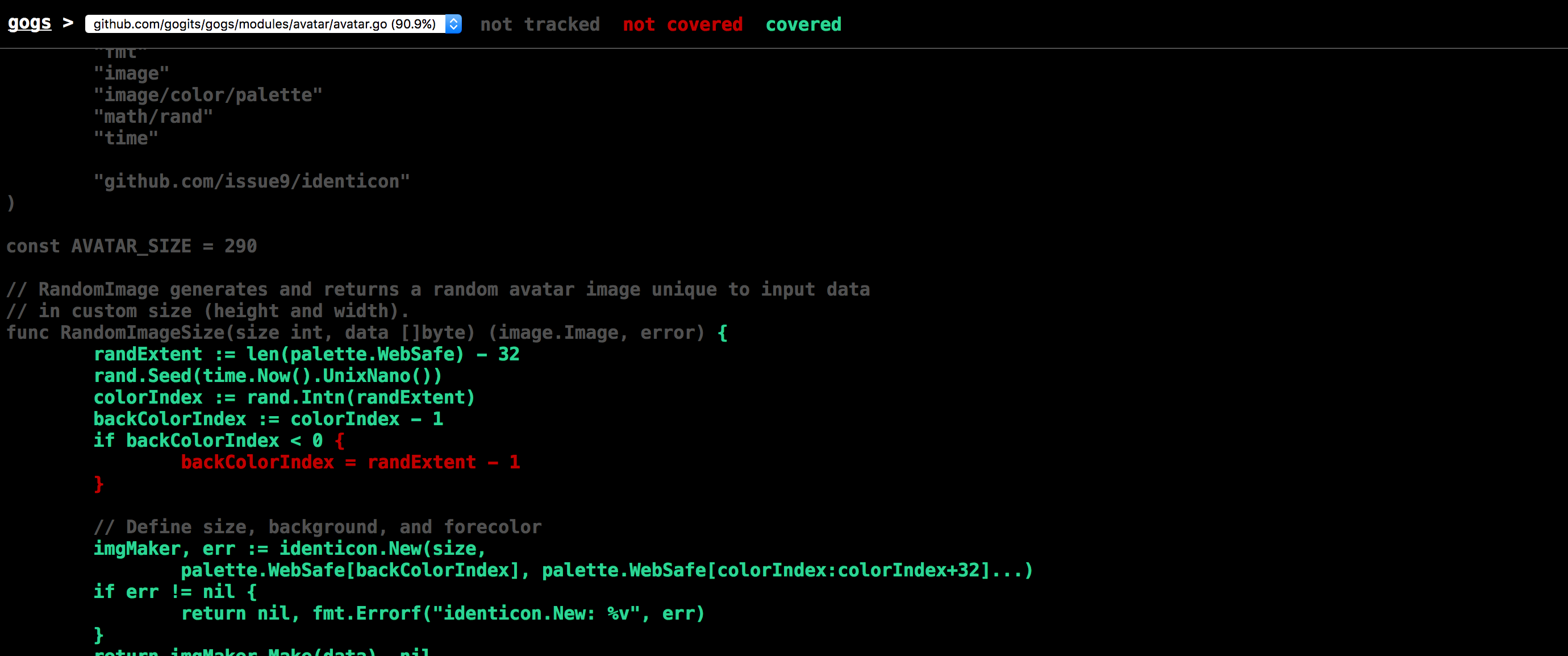Gogradle - a Full-featured Build Tool for Golang

Gogradle is a gradle plugin which provides support for building golang.
2017-04-06 Now Gogradle can build 666 of Github’s top 1000 Go repositories WITHOUT any extra configuration!
2017-03-20 Now Gogradle can generate HTML reports for test and coverage!
2017-02-26 Now Gogradle can integrate with IDE perfectly!
What is Gogradle?
Gogradle is a Gradle plugin which provide modern build support for Golang. Gogradle is deeply inspired by glide(I need to pay respect for it). You can simply think Gogradle as glide+make.
Why Gogradle?
makehas a very steep learning curve, thus many people (like me) aren’t good at it; Gradle use a DSL with similar syntax to Java to describe a build, which is more easy for me.MakefileandShellhave cross-platform issues, especially on Windows. Thanks to Gradle and JVM, Gogradle provide an excellent cross-platform support and can leverage the whole Java ecosystem- There’re many mature plugins in Gradle ecosystem, and it’s easy for youself to implement a plugin to reuse your build code
- Gogradle supports project-scoped
GOPATH, if you prefer - Gogradle supports existence and switch of multi-version of Go
- There’s plenty of package management tools in Go community which are not compatible with each other.
- Gogradle provides a migration command which enables you to migrate from other tools.
- Gogradle is compatible with
glide/glock/godep/gom/gopm/govendor/gvt/gbvendor/trash/gpm. When retrieving a dependency package’s transitive dependencies, it can recognized lock files of these tools.
- Gogradle has a long-term and active development support
Gogradle implements most features of glide and adds some extra features:
- Test and coverage reports generation
- Multi-version management of Go
- Full IDE support (IntelliJIDEA/VSCode/WebStorm/PhpStorm/PyCharm/RubyMine/CLion/Gogland/Vim), especially deep integration with IntelliJIDEA
- Declaration and substitution of repositories, which can be used as mirror repositories
If you puzzled over these issues, or you were a Java developer and familiar with Gradle, Gogradle is your choice!
Gogradle’s objective is not replacing other tools, it only provides an option for developers.
Feature
- No need to preinstall anything but
JDK 8+(including golang itself)- If you’re using JetBrains IDE, then JDK is not required
- Supports Go 1.5+ and allow their existence at the same time
- Perfect cross-platform support (as long as
Javacan be run, all tests have passed on OS X 10.11/Ubuntu 12.04/Windows 7) - Project-scope build, needless to set
GOPATH - Full-featured package management
- Needless to install dependency packages manually, all you need to do is specifying the version
- VCS supported: Git/Mercurial
- Transitive dependency management
- Resolves package conflict automatically
- Supports dependency lock
- Supports importing dependencies managed by various external tools such as glide/glock/godep/gom/gopm/govendor/gvt/gbvendor/trash/gpm (Based on this report)
- Supports submodule
- Supports SemVersion
- Supports vendor
- Supports flattening dependencies (Inspired by glide)
- Supports renaming local packages
- Supports private repository
- Support automatic repository url substitution
build/testdependencies are managed separately- Supports dependency tree visualization
- Supports sub packages
- Supports build/test/single-test/wildcard-test/cross-compile
- Modern production-grade support for automatic build, simple to define customized tasks
- Native syntax of gradle
- Additional features for users in mainland China who are behind the GFW
- Supports shadowsocks proxy
- IDE support (IntelliJIDEA/Gogland/Webstorm/PhpStorm/PyCharm/RubyMine/CLion/Vim)
- Test and coverage report generation
- Incremental build
How Gogradle works
Gogradle’s work is based on vendor mechanism. You declare your build dependencies and build logic with Gradle DSL in build.gradle, and Gogradle will resolve all dependencies and potential package conflict, then install them into vendor directory and execute a build. In this course, dependency packages will be flattened to avoid issues. Later, you can lock your resolved dependencies to ensure a reproducible build. It’s up to you whether to check in vendor directory or not.
See here for examples.
Table of Content
- Getting Started
- Dependency Management
- Tasks in Gogradle
- Repository Management
- Set Proxy For Build
- IDE Integration
Test report




Coverage report


Contributing
If you like Gogradle, star it please.
Please feel free to submit an issue.
Fork and PR are always welcomed.

